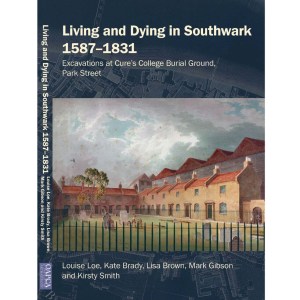Description
Excavations for the Thameslink project at Borough Viaduct and London Bridge Station have provided important new insights into the development of Southwark from the Saxon period up to the 19th century. The landscape of islands and waterways that characterised Roman Southwark was transformed through the 1st and 2nd millennia AD, as new areas were reclaimed for settlement. Lower-lying zones nonetheless remained prone to flooding throughout much of the medieval period and the management of drainage channels was clearly a significant concern.
This new 2-volume publication focuses on the post-Roman evidence from the area of Borough Market and London Bridge Station. A substantial ditch identified at Borough Market, and contemporary late Saxon features, may relate to Southwark’s Saxon burh defences. Occupation increased throughout the medieval and post-medieval periods and this publication charts the development of the network of property boundaries, streets and alleys associated with that occupation. Evidence for almshouses and St Thomas’s Hospital were also revealed. Historically a focus of craft and industry, the archaeological evidence from Southwark revealed in these excavations, includes evidence for bone working, tanning, leather working, pin making and clay tobacco pipe manufacture. Timbers reused in channels revetments excavated beneath London Bridge Station provide evidence of woodworking techniques used in timber-framed houses and boats of the 12th to 18th centuries.







There are no reviews yet.